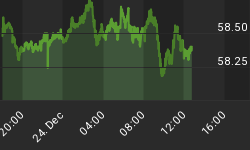
www.CartoonStock.com
The S&P 500 started into December with seven higher closes during the first eight sessions, not posting an intraday low less than -0.40% and not closing lower less than -0.15% on any of the first eight sessions, up to now completely in line with historical positive seasonalities and bullish setups triggered during the last couple of sessions (see Looking Forward to a Strong December and Triple Positive & Up gt. +3.0% Month-To-Date).
Since 1930 there have been 19 occurrences (months) where the S&P 500 did not post an intraday low less than -0.40% and not closing lower less than -0.15% on any of the first eight sessions of a month.
Table I below shows the date of the last session of the month ("End-of-Month Day"), the S&P 500's historical (since 1930) performance ("Monthly Returns"), the respective number of sessions, the maximum gain and the maximum loss (drawdown) during the month (assumed one went long on the last session of the previous month), and the respective monthly performance for the previous ("Prev. Month") and the then following month ("Next Month") on those occurrences (months) where the S&P 500 did not post an intraday low less than -0.40% and did not close lower less than -0.15% on any of the first eight sessions of a month in the past.

(* no close below trigger day's close during period under review)
The S&P 500 closed out the month with a gain on all 19 occurrences (and shows a median monthly gain of +5.35%), and did not post a single close below the previous end-of-month close on 15 out of those 19 occurrences.
Table II below now shows all occurrences and the S&P 500's historical performance (since 01/01/1930) over the course of the then following 1, 2, 3, 5 and 21 sessions (1 month later), assumed one went long on close of a session where the S&P 500 did not post an intraday low less than -0.40% and did not close lower less than -0.15% on any of the first eight sessions of a month in the past.

(* no close below trigger day's close during period under review)
If history gives any guidance, there is a good chance that a pullback - if any - from the recent run-up in the markets will be modest, and the market might be able to even extend recent gains into the end of the month. Historically, and despite the then recent run-up right at the start of a month and despite regularly so-called "overbought" conditions, the S&P 500 never lost more than -0.25% on the then following 9th session of a month (in this event on Monday, December 13), closed at an even higher level 5 sessions (1 week) later on 11 out of the last 12 occurrences (in this event on December's triple witching Friday), and closed higher one month later on 16 out of 19 occurrences (or 84.21% of the time). In addition, the S&P 500 posted at least one higher close over the course of the next month on 18 out of those 19 occurrences (not in 1945).
In addition, next week will be December's triple witching week which historically shows a positive bias as well.
Table III below shows the date of the last session of the week ("End-of-Week Day"), the S&P 500's historical (since 1974) performance ("Weekly Returns"), the respective number of sessions, the maximum gain and the maximum loss (drawdown) during the week (assumed one went long on the last session of the previous week), and the respective weekly performance for the previous ("Prev. Week") and the then following week ("Next Week") with respect to December's triple witching week (since 1974; in 1973 standardized exchange traded call options were released for trading by the Chicago Board of Options Exchange (CBOE) and the Options Clearing Corporation (OCC)).

(* no close below trigger day's close during period under review)
It is interesting to note that
-
... the S&P 500 closed out December's triple witching week with a gain on 21 out of the last 26 occurrences (or 87.50% of the time), thereof 8 of the last 9;
-
... since 1984 (during the last 26 occurrences / years), the S&P 500 lost more than -0.75% on the week only once (2000);
-
... downside potential was regularly limited. The S&P 500 lost more than -2.0% on the week only once (2000); and
-
... the S&P 500 never looked back and did not post a single close below the previous end-of-week close ("max. loss" is positive) on 9 out of 36 occurrences (or 25.00% of the time).
Conclusions:
From a statistical and historical point of view, this might not be the peak time to bet the farm on any short-term mean reversion tendency. With positive seasonalities (December, December's option expiration week), recent bullish setups triggered and the market's remarkable tendency to power ahead despite overbought conditions, probabilities and odds are tilt in favor of a continuation of the recent run-up in the markets, and downside potential might be limited until the end of the year (subject to any force majeure).
Successful trading,
















